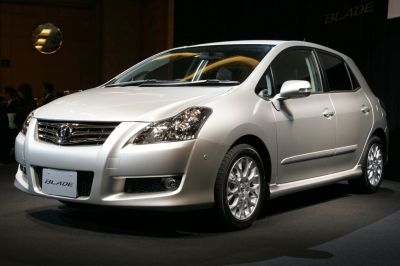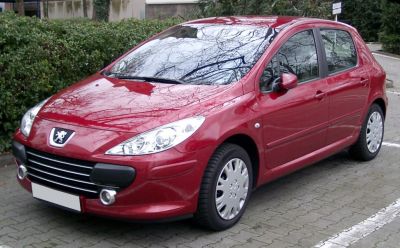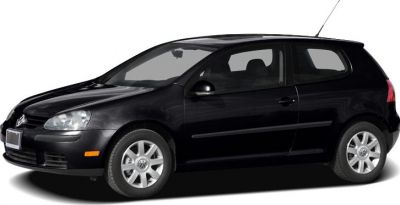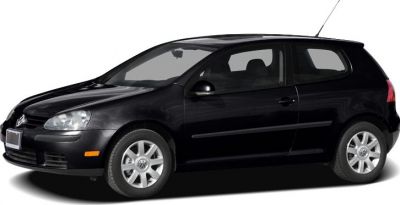 2007 Toyota Auris I Dimensions, Size & Specs
2007 Toyota Auris I Dimensions, Size & SpecsMeasurements of the 2007 Toyota Auris I, engineered for optimal performance and comfort
| Dimensions | |
|---|---|
| Length: | 4220 mm166.1 in13.8 ft |
| Width: | 1760 mm69.3 in5.8 ft |
| Height: | 1515 mm59.6 in5.0 ft |
| Trunk Capacity: | 350-354 liter12.4-12.5 cu ft |
| Trunk Capacity (Max): | 750-1355 liter26.5-47.9 cu ft |
| Weight Specifications | |
| Curb Weight: | 1220-1435 kg2690-3164 lbs |
| Maximal permitted Weight: | 1720-1920 kg3792-4233 lbs |
| Roof Load: | 75 kg165 lbs |
| Tire Specifications | |
| Rims Sizes: | 16-inch rims:
|
| Tire Sizes: |
|
The Toyota Auris I, produced between 2006 and 2010 and marketed from the 2007 model year, is a compact hatchback that offers a blend of practicality and efficient design. With an overall length of 4220 mm (166.1 inches), a width of 1760 mm (69.3 inches), and a height of 1515 mm (59.6 inches), the Auris I fits comfortably within the compact segment, providing an ideal balance for urban driving and parking without sacrificing passenger space.
This generation of the Auris is relatively lightweight for its class, with curb weights ranging from 1220 kg to 1435 kg (2689 to 3162 lbs), making it agile and fuel-efficient. Its maximum permissible weight varies between 1720 kg and 1920 kg (3792 to 4233 lbs), supporting a robust payload. The vehicle supports roof loads of up to 75 kg (165 lbs), adding further versatility for transporting extra cargo.
Practicality is enhanced by its luggage capacity, offering between 350 to 354 liters (12.4 to 12.5 cubic feet) of space behind the rear seats. Folding down the rear seats expands this capacity significantly, ranging from 750 liters up to an impressive 1355 liters (26.5 to 47.8 cubic feet), which is useful for larger or bulkier loads.
Tires and rims are optimized for comfort and handling, with available rim sizes including 15-inch (6J), 16-inch (6.5J), and another 16-inch option at 6J, paired with tires sized from 195/65 R15 to 225/45 R17. This flexibility allows for customization based on driver preference or driving conditions.
Overall, the Toyota Auris I stands out as a compact hatchback designed with everyday usability in mind, balancing size, weight, and storage capacity to suit a wide audience looking for reliability and versatility in a city-friendly vehicle.
Discover the standout features that make the 2007 Toyota Auris I a leader in its class
Have a question? Please check our knowledgebase first.
The Toyota Auris I, produced from 2006 to 2010, has a length of 4220 mm (166.1 inches), a width of 1760 mm (69.3 inches), and a height of 1515 mm (59.6 inches). These compact dimensions situate the Auris firmly in the hatchback segment, providing a balance between interior space and maneuverability. Its size makes it suitable for both city driving and longer trips, offering a comfortable cabin without feeling overly large on the road.
The curb weight of the Toyota Auris I ranges from 1220 kg to 1435 kg (approximately 2690 to 3162 lbs), depending on the specific configuration and trim level. The maximum permissible weight or gross vehicle weight ranges between 1720 kg and 1920 kg (about 3793 to 4233 lbs). These weight figures affect performance, fuel efficiency, and handling. The relatively moderate weight supports a fuel-efficient ride while maintaining solid road stability.
The luggage capacity of the Toyota Auris I ranges from 350 to 354 liters (approximately 12.4 to 12.5 cubic feet) with the rear seats in their upright position. When the rear seats are folded down, this capacity significantly expands to between 750 and 1355 liters (about 26.5 to 47.8 cubic feet). This considerable increase makes the Auris versatile for transporting larger loads, groceries, sports equipment, or luggage for road trips, enhancing its practicality as a small family or city car.
Yes, the Toyota Auris I's dimensions make it well-suited for parking in a standard residential garage. With a length of 4220 mm (166.1 inches), width of 1760 mm (69.3 inches), and height of 1515 mm (59.6 inches), it fits comfortably within typical garage spaces, which are generally around 2.4 meters (7.9 feet) wide by 5.5 meters (18 feet) long. This makes the Auris practical for daily use in urban and suburban environments where garage storage is common.
The Toyota Auris I replaced the Corolla hatchback in 2006 as Toyota's compact hatchback offering in Europe and other markets. Compared to the last generation Corolla hatchback, the Auris was slightly larger and more modern in design. It is approximately 4.22 meters (166.1 inches) in length compared to the older Corolla's length which generally ranged around 4.2 meters (165.4 inches). The width and height are also comparably more contemporary, providing better interior space utilization and a more aerodynamic profile. These upgrades contributed to improved interior comfort, driving dynamics, and overall appeal.
The Toyota Auris I was available with several tire and rim size options to suit different trims and driving preferences. Rim sizes included 15-inch rims sized 6.5J, 16-inch rims sized 6J, and 16-inch rims sized 6.5J. Corresponding tire sizes were 195/65 R15, 205/55 R16, and 225/45 R17. These setups allowed drivers to balance ride comfort, handling, and performance depending on the chosen configuration, whether prioritizing a smoother ride or a sportier driving experience.
The Toyota Auris I's interior space and luggage capacity were competitive within the compact hatchback segment during its production years. Offering 350 to 354 liters (approximately 12.4 to 12.5 cubic feet) of luggage capacity with seats up, it aligns closely with rivals like the Volkswagen Golf and Ford Focus of that era, which generally offer between 350 and 380 liters. With rear seats folded, the Auris impressively increases its capacity to up to 1355 liters (47.8 cubic feet), providing flexibility on par with or exceeding many competitors. This makes it a practical choice for buyers looking for versatility without sacrificing size.
The roof load limit for the Toyota Auris I is set at 75 kg, which is about 165 lbs. This limit indicates the maximum safe weight that can be placed on the vehicle’s roof racks or roof box accessories without compromising vehicle stability or structural integrity. It allows owners to carry additional cargo such as bicycles, roof boxes, or sporting equipment for outdoor activities. However, exceeding this limit can negatively impact driving safety, fuel consumption, and handling, so staying within this weight is crucial.
The Toyota Auris I has a curb weight ranging from 1220 kg to 1435 kg (2690 to 3162 lbs), depending on trim level and engine configuration. Lighter variants generally offer better fuel efficiency and more agile handling characteristics, making them well-suited for city driving and economical long-distance travel. Heavier versions, often equipped with additional features or larger engines, might sacrifice some fuel economy but provide increased stability and safety enhancements. Overall, the Auris maintains a good balance between weight, efficiency, and driving dynamics.
The Toyota Auris I, produced between 2006 and 2010, is a compact hatchback designed to replace the Corolla hatchback in many markets, especially Europe. It was positioned as a practical, reliable, and fuel-efficient vehicle targeting young professionals and small families looking for a stylish yet functional car. Its design emphasized modern aesthetics, improved driving dynamics, and versatile interior space to stand out in the competitive compact segment. The Auris contributed to Toyota’s goal of offering a fresh alternative to traditional compact hatchbacks.
Discover similar sized cars.

| Production: | 2006-2011 |
|---|---|
| Model Year: | 2007 |
| Length: | 4220 mm166.1 in |
| Width: | 1760 mm69.3 in |
| Height: | 1515 mm59.6 in |

| Production: | 2005-2008 |
|---|---|
| Model Year: | 2005 |
| Length: | 4212 mm165.8 in |
| Width: | 1746 mm68.7 in |
| Height: | 1510 mm59.4 in |

| Production: | 2001-2005 |
|---|---|
| Model Year: | 2001 |
| Length: | 4202 mm165.4 in |
| Width: | 1730 mm68.1 in |
| Height: | 1512 mm59.5 in |

| Production: | 2023-present |
|---|---|
| Model Year: | 2023 |
| Length: | 4264 mm167.9 in |
| Width: | 2070 mm81.5 in |
| Height: | 1564 mm61.6 in |

| Production: | 2019-2023 |
|---|---|
| Model Year: | 2020 |
| Length: | 4261 mm167.8 in |
| Width: | 2070 mm81.5 in |
| Height: | 1568 mm61.7 in |

| Production: | 2006-2009 |
|---|---|
| Model Year: | 2006 |
| Length: | 4210 mm165.7 in |
| Width: | 1759 mm69.3 in |
| Height: | 1479 mm58.2 in |

| Production: | 2006-2009 |
|---|---|
| Model Year: | 2006 |
| Length: | 4210 mm165.7 in |
| Width: | 1759 mm69.3 in |
| Height: | 1479 mm58.2 in |

| Model Year: | 2022 |
|---|---|
| Length: | 4200 mm165.4 in |
| Width: | 2055 mm80.9 in |
| Height: | 1505 mm59.3 in |
